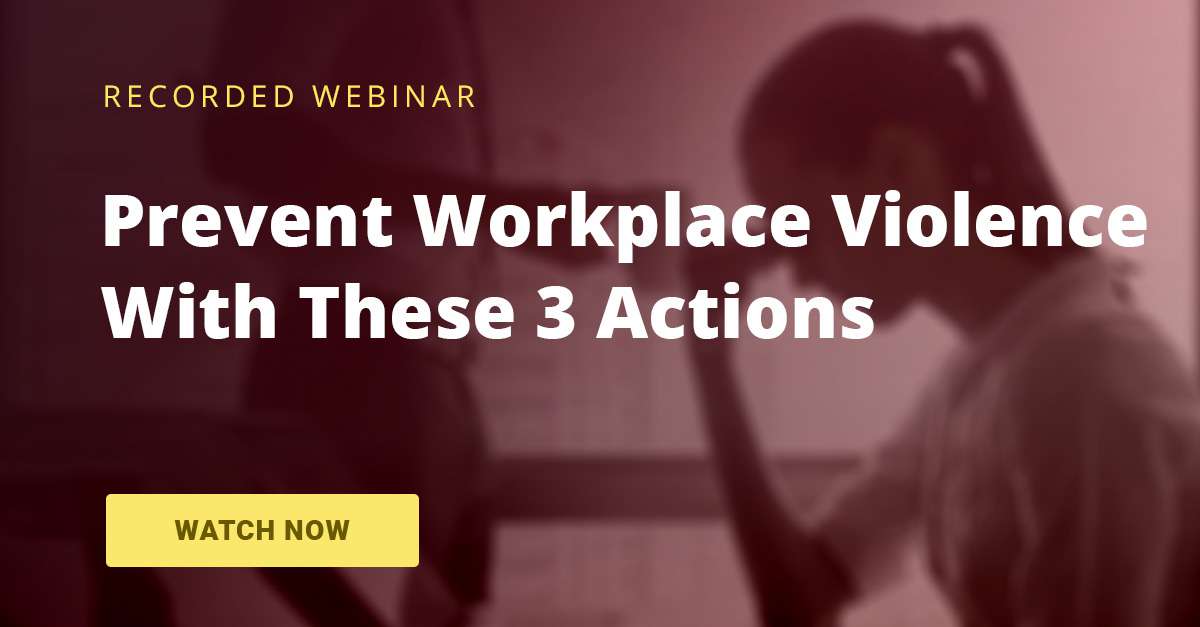Who Are The Main Perpetrators Of Workplace Violence?
While workplace violence is not new, the rate at which it occurs should be cause for alarm.
Violence has become a rising threat in American workplaces, accounting for about 9% of all employment-related fatalities in 2015, according to the U.S. Bureau of Labor Statistics. The National Safety Council reports that in 2016, 17% of workplace deaths were the result of violence.
Emergency preparedness managers, working with HR and security leaders, must work together to prevent workplace violence in their organizations. Addressing these challenges promptly and effectively can mean the difference between life and death.
Stages of Workplace Violence and Traits of Aggressors
There are three stages of violence that every employee needs to know how to recognize. Stage 1 is characterized by abusive language. This can also include lies, sexual harassment and talks of suicide. Stage 2 evolves into threatening language. Stage 3 is marked by actual acts of violence.
During a recent AlertFind webinar, workplace interactions expert David Smith noted that although the stages may demonstrate a pattern or sequence, the same cannot be said for the aggressors themselves. You cannot judge someone, and label them a would-be perpetrator, by their appearance alone.
By monitoring the demeanor, tone and language used by people communicating with the organization, you might spot the warnings of a physical threat. Smith said there are three common types of aggressors:
- Individuals with no connection to the business. This includes thieves, vandals and looters. Terrorists would also be included.
- Non-employees with connections to the business. These are people outside the organization whom you might interact with due to the nature of your company. Examples include customers, suppliers, mail and parcel carriers, and even competitors. A study by the Maricopa Community College Department of Public Safety found that the majority of people committing violent crimes have an outside connection, such as being a vendor or a customer. This was exemplified in April 2018, when a woman entered YouTube’s California headquarters with a gun after the company demonetized her video channel. According to reports, she had told her family that YouTube “ruined her life,” and this led her to shoot and injure at least three employees before turning the gun on herself and ending her life.
- Employees and people related to them. Some employees may be easily angered, hold a grudge or have psychological issues. This includes employees who are romantically linked or, in some cases, someone whose advances have been rejected.
Additionally, perpetrators who fall under this category include employees’ family members, spouses or other people from their personal and private lives. “We’ve seen on several occasions a scenario where a husband might be going through a divorce or separation from his wife and he can’t find or contact her. But he knows where she works, and that’s where he goes,” Smith said. “That’s one sort of person you prepare for.”
The Importance of Training and Education
Education is critical for organizations. Employers should be investing in training and programs so that employees can learn the warning signs of violence among their coworkers. Warning signs can include:
- Social isolation and poor peer relationships
- Fascination with weapons
- Severe stress
- Substance abuse
These are just some of the danger signals that employees need to recognize and report to the threat management team. “That’s why you need to encourage early reporting,” Smith said. “Once that crisis point is reached it’s far more difficult to combat it as opposed to preventing it.”
And, while rehearsing how to respond during a physical confrontation is a key component of proactive training, taking preventative measures from the outset is the most effective deterrent of violence. This includes establishing an employee reporting structure - via the threat management team - if workers notice behaviors described in the three stages of violence.
To learn more from David Smith about how companies can proactively address workplace violence, listen to our new webinar, “Preventing Workplace Violence: 3 Actions To Take Now.”

You are well on your way toward protecting your staff and organization.
Take the next step toward protecting your organization by learning more about emergency notification systems and the vital role they play in your emergency preparedness plan.
